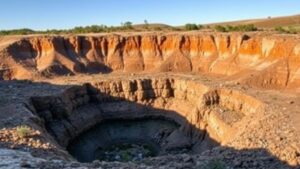Historical Gold Mining Methods: Lessons for Modern Prospectors
Historical Gold Mining Methods: Lessons for Modern Prospectors
Gold mining has a long and storied history, ranging from ancient civilizations to modern-day prospecting. Various mining methods have evolved over the centuries, adapting to technological advancements and environmental considerations. Understanding these historical methods can provide valuable insights for today’s prospectors. This article explores key gold mining techniques and the lessons they offer for contemporary practices.
Alluvial Mining: A Foundation of Gold Extraction
Alluvial mining involves retrieving gold from riverbeds and floodplains, relying on natural water flow to concentrate the mineral. This method dates back to ancient times and was particularly favored during the gold rushes of the 19th century.
One of the most notable examples of alluvial mining occurred in California during the 1849 Gold Rush, where prospectors known as Forty-Niners panned for gold in rivers. This technique, though simple, was effective for accessing surface gold.
- Minimal equipment required: panning, sluicing, and rocker boxes.
- High yield potential in areas with significant gold deposits.
Lesson for Modern Prospectors: Alluvial methods remain relevant today. Modern prospectors can utilize similar techniques while incorporating advanced tools like highbankers and suction dredges, allowing for more efficient gold recovery.
Hard Rock Mining: Depths of Extraction
Hard rock mining involves extracting gold embedded in solid rock formations. This method gained prominence as surface deposits dwindled, leading miners to tunnel deep underground.
The Homestake Mine in South Dakota, operational since 1876, is one of the most famous examples of hard rock mining. With its deep shafts reaching over 8,000 feet, it produced millions of ounces of gold over its lifetime.
- Complex extraction processes requiring advanced engineering.
- Increased safety and environmental regulations compared to earlier methods.
Lesson for Modern Prospectors: Understanding geological formations and employing proper safety measures can enhance success in hard rock mining. Utilizing modern technologies like 3D geological mapping and automated drilling can also improve efficiency and safety.
Cyanide Leaching: A Controversial Innovation
Introduced in the late 19th century, cyanide leaching revolutionized gold recovery from lower-grade ores. This process involves dissolving gold from crushed rock using a cyanide solution, allowing for extraction even from ore with as little as 0.01 ounces of gold per ton.
Although highly effective, cyanide leaching has faced criticism due to its environmental impact, particularly in terms of water contamination. The 2000 Baia Mare cyanide disaster in Romania, where a cyanide spill contaminated local waterways, serves as a cautionary tale.
- High recovery rates for low-grade ores with greater profit potential.
- Requires stringent environmental regulations to safeguard ecosystems.
Lesson for Modern Prospectors: While cyanide leaching can be effective, its risks necessitate careful consideration and responsibility. Today’s prospectors can explore alternative methods such as gravity concentration or bioleaching, which are less harmful to the environment.
Environmental Considerations: Learning from the Past
Historical gold mining practices often neglected environmental consequences, resulting in significant damage to ecosystems and communities. Contaminated water sources, landscape alteration, and loss of biodiversity highlight the need for sustainable practices.
For example, the mining industry has learned from the legacy of the California Gold Rush, which led to significant environmental degradation. In contrast, modern regulations emphasize reclamation and responsible resource management.
- Water management and recycling practices to minimize usage.
- Restoration of mining sites to rehabilitate ecological balance.
Lesson for Modern Prospectors: Incorporating sustainable practices not only enhances the prospect of regulatory compliance but also preserves the land for future generations. Modern prospectors should assess their environmental impact and pursue eco-friendly techniques, such as using biodegradable agents for extraction.
Conclusion: Embracing Historical Insights
The evolution of gold mining methods demonstrates both innovation and caution. Historical techniques, ranging from alluvial and hard rock mining to the controversial use of cyanide, provide valuable lessons for modern prospectors. By respecting nature and integrating advanced technologies, contemporary gold seekers can ensure sustainable and responsible mining practices.
Actionable Takeaways:
- Research historical mining methods to inform current practices.
- Use modern tools and technologies while prioritizing safety.
- Adopt sustainable practices to protect the environment and communities.
By learning from the past, modern prospectors can work towards a future where gold mining is not only profitable but also environmentally responsible.
